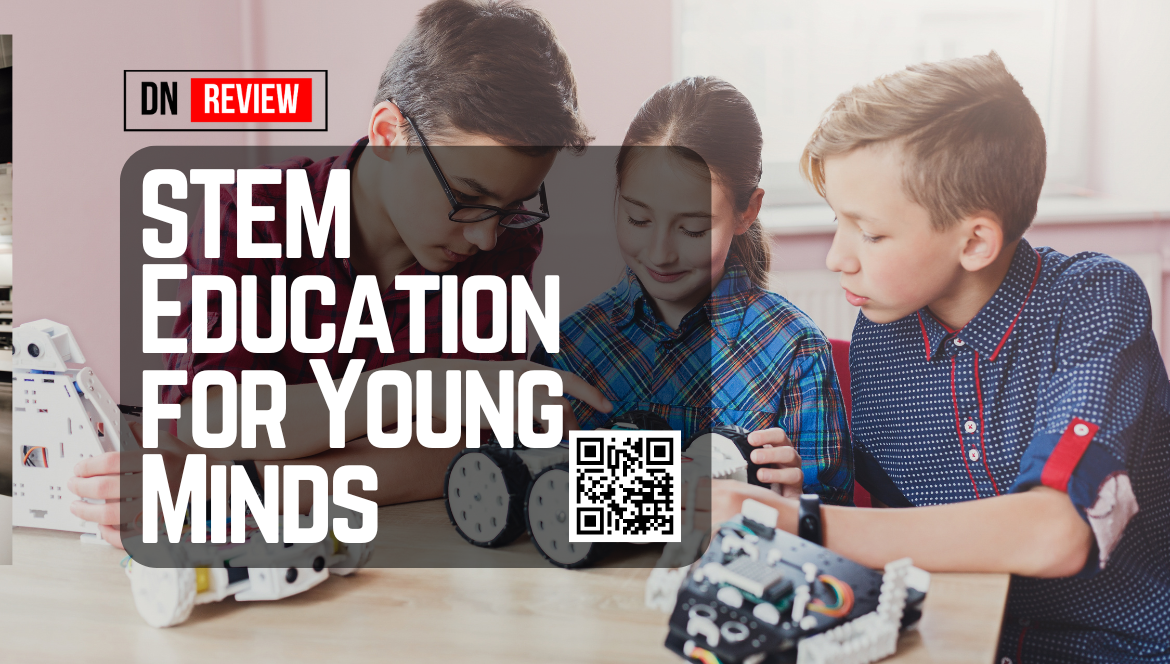STEM education, focusing on Science, Technology, Engineering, and Mathematics, is essential for fostering critical thinking, creativity, and problem-solving skills in young minds. Introducing children to STEM concepts early on prepares them for future challenges in a rapidly evolving technological world.
Here’s why and how STEM education can be beneficial for young learners:
Importance of STEM Education for Young Minds
Critical Thinking and Problem Solving:
- STEM subjects encourage students to think critically and approach problems methodically. By engaging in experiments and projects, children learn to ask questions, analyze data, and develop solutions.
Creativity and Innovation:
- STEM education promotes creativity by allowing students to design, build, and experiment. This hands-on approach helps them understand the practical applications of their knowledge, fostering a sense of innovation.
Future Career Opportunities:
- As technology continues to advance, many future jobs will require STEM skills. Early exposure to STEM subjects helps children develop an interest in these fields, potentially leading to fulfilling careers in areas such as engineering, computer science, or biotechnology.
Interdisciplinary Learning:
- STEM education integrates multiple subjects, showing students how different fields of knowledge are interconnected. This interdisciplinary approach mirrors real-world scenarios where solutions often require a blend of skills from various domains.
Encouraging Diversity and Inclusion:
- Promoting STEM education among all children, regardless of gender or background, can help bridge the gap in underrepresented groups in STEM fields. Early encouragement can lead to a more diverse and inclusive workforce in the future.
Strategies to Implement STEM Education
Hands-on Learning Activities:
- Encourage children to participate in science experiments, coding exercises, robotics, and engineering challenges. These activities make learning interactive and fun, reinforcing STEM concepts through practical application.
Incorporating Technology in the Classroom:
- Use educational software, apps, and tools that teach coding, mathematics, and science. Virtual labs and simulations can also help students visualize complex concepts and understand them better.
Project-Based Learning:
- Engage students in long-term projects where they can apply their STEM knowledge. For example, building a model bridge or developing a simple video game can teach engineering principles and programming skills.
Encouraging Curiosity and Exploration:
- Foster an environment where asking questions and exploring new ideas is encouraged. Curiosity-driven learning leads to deeper understanding and retention of knowledge.
Collaboration and Teamwork:
- Many STEM activities are best done in groups, promoting collaboration and teamwork. This approach helps students learn from one another and understand the value of different perspectives.
STEM Competitions and Clubs:
- Encourage participation in science fairs, robotics clubs, math competitions, and coding camps. These extracurricular activities can spark a lifelong interest in STEM subjects.
Resources for STEM Education
- Online Platforms: Websites like Khan Academy, Scratch, and Code.org offer free resources for learning STEM subjects at various levels.
- Educational Kits: STEM kits, like those from LEGO Education or LittleBits, provide hands-on tools to explore engineering, electronics, and robotics.
- Community Programs: Many communities offer STEM camps, after-school programs, and workshops that provide additional learning opportunities.
Conclusion
STEM education is crucial for developing the next generation of innovators and problem solvers. By introducing young minds to STEM concepts in engaging and accessible ways, we can equip them with the skills they need to thrive in an increasingly complex world. Whether through classroom activities, technology integration, or extracurricular programs, fostering an early interest in STEM can have a lasting impact on a child’s educational and career trajectory.
DN Review

